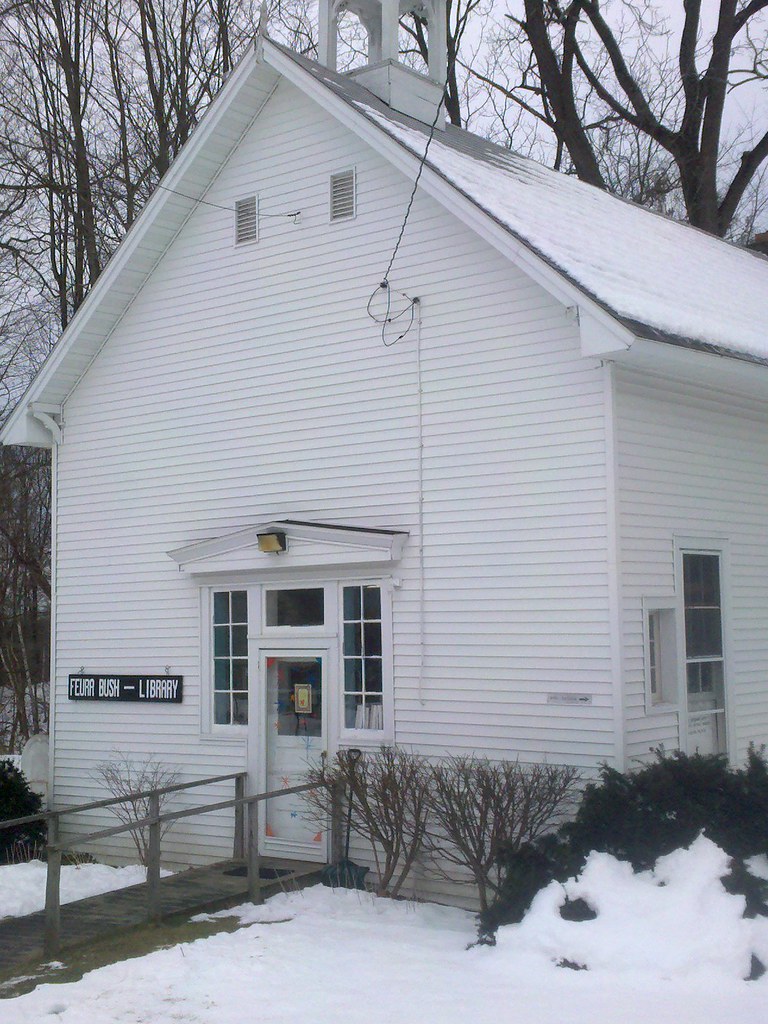If visitors to the Twelve Mile Circle come from a town with an odd name they’re automatically fodder for an article. I’ll dig until I find something memorable just on principle. Additionally, I’ll note that a single letter, the scant difference between Fire and Fir in this instance, could alter meanings considerably.
Maybe I should start at the beginning. I reviewed the visitor logs recently – as I like to do — and I noticed that someone dropped onto 12MC from somewhere called Feura Bush. Maybe a few readers already knew about that town? Maybe one of you lives there? I’d never heard of it.
Feura Bush
It wasn’t too difficult to learn some basic Feura Bush facts even considering its diminutive size. It’s a hamlet south of Albany, New York, within New Scotland township (map). The Feura Bush postal area (ZIP Code™ 12067), which is actually larger than Feura Bush the town, had a population of only 1,500 according to the latest census. Honestly, Feura Bush wasn’t much larger than a crossroads near Conrail’s Selkirk rail yard and an Owens Corning plant that manufactured fiberglass building insulation.
However, none of that explained the etymology of Feura Bush.
Feura Bush wasn’t even its original name. “New Scotland Township” published by the New Scotland Historical Association in 2000 explained that the area was once known “as Moaksville and later Jerusalem.” Moaks was the surname of an early family that settled the area. Jerusalem was named for the Jerusalem Reformed Church which dated to 1791 (with the current structure built in 1825).
The town had to ditch the Jerusalem moniker for the usual reason: another Jerusalem already existed in New York when the town grew large enough to justify its own post office. The Postal Service required a unique name, and I guess the residents didn’t want to go back to Moaksville.

Feura Bush also had an old single-room schoolhouse dating to 1885. It was converted to the The Feura Bush Neighborhood Library in modern times. That had nothing to do with the story, so feel free to ignore this section. I just liked the building.
Quick Tangent
I’m getting to an explanation. Bear with me. First, however, enjoy the fingers.
I applaud Google’s efforts to digitize books in a bold effort to place public domain documents online and available worldwide. There were bound to be a few mistakes with a project so grand. One of the books I consulted demonstrated that dramatically. Whoever was responsible for scanning pages that day must have been out drinking the night before because his fingers and hands appeared on random pages throughout the book. This one was my favorite. I loved the little finger stockings.
UPDATE: Apparently Google fixed the issue. There used to be a great image of the fingers of the person photocopying the page accidentally reproduced in the image.
So, Fire or Fir?
Two distinct theories purporting to explain the Feura Bush etymology.
FIRE. The first one, favored by the previously-mentioned New Scotland Township book stated, “The name of Feura Bush, meaning ‘fire bush’ was chosen because sunlight reflecting off the pine trees made the hills appear to be on fire.” The Feura Bush Neighborhood Association also favored that explanation and took it a step further, attributing the term to “an old native word.”
An old native word? Probably not. Astute members of the 12MC audience may have already considered that this was once part of New Netherland. Feura Bush could have been a corruption of something Dutch, and indeed, several sources traced the etymology to vurenbosch (pronounced vürebosch). Drop that into Google Translate and vurenbosch became forest fires. Hold that thought for a moment.
FIR. An older source, the University of the State of New York Bulletin, 1914, claimed that vurenbosch was Dutch for “fir bush, or woods.” I checked the Dutch Wikipedia page for Vuren (hout) which said “Het Nederlandse woord vuren is de genormeerde naam voor het hout van de fijnspar” translated, “The Dutch word vuren is the standardized name for the wood of spruce.” An image search on “vuren” produced lots of pictures of pine lumber, and nothing related to fire. Either way, Feura Bush likely related to local conifers.
Are there any native Dutch speakers in the 12MC audience who can nail down the true meaning one way or the other?

Leave a Reply